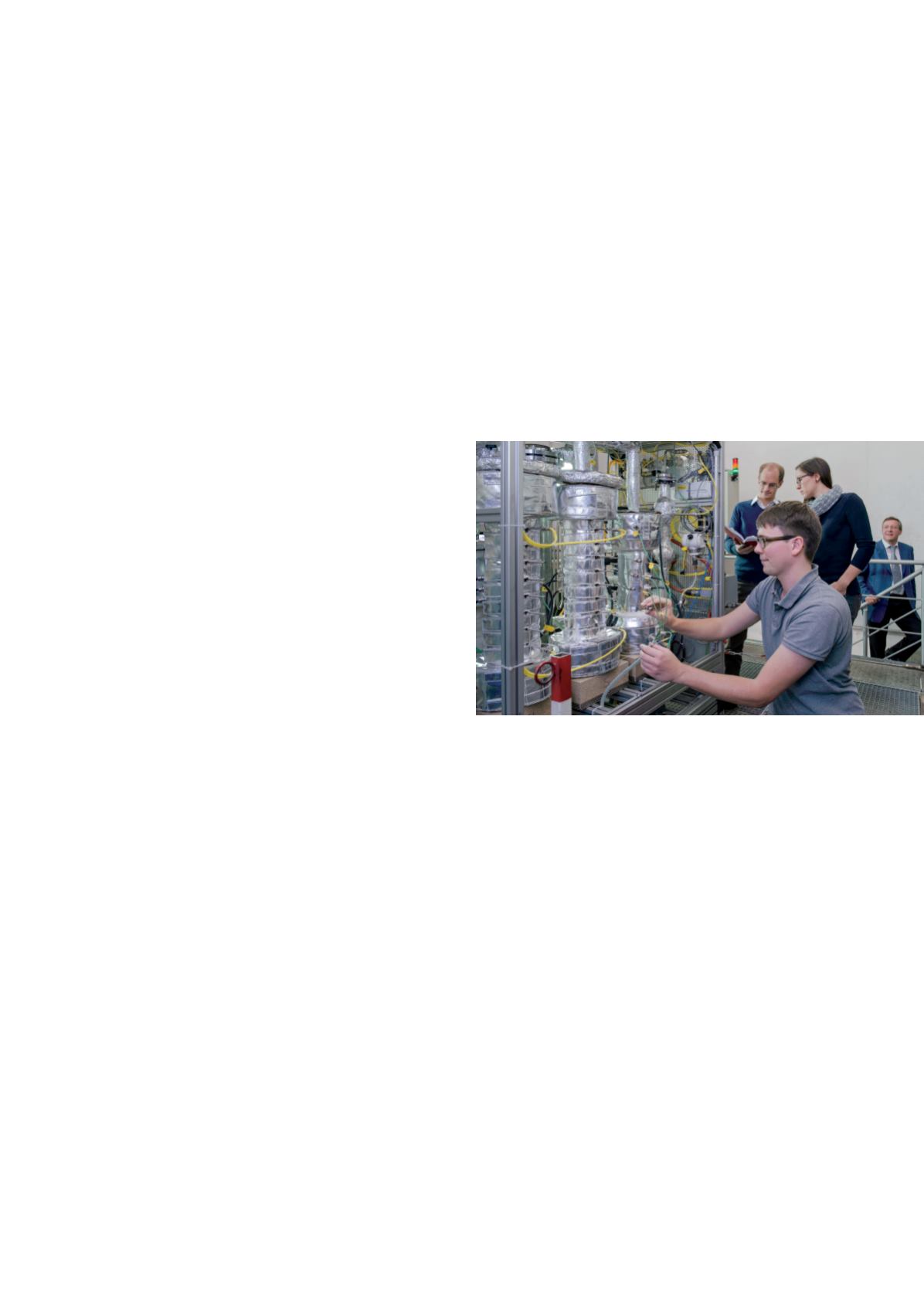

240
Energy Systems
Power generation and solid fuel conversion
n
The focus of the Institute for Energy Systems in 2017 was to investigate future power generation
systems and solid fuel conversion processes.
Our research can be divided into four areas: power plant
technology, renewable energy, modeling and simulation,
as well as measurement technology. We cooperate with
research institutions and industrial companies on a
number of national and international research projects.
The expertise of the institute is also reflected in the large
number of operated test rigs and applied measurement
technologies. The mechanical workshop, electronics lab
and chemical lab are also essential parts for the experi-
mental operability at our institute.
Key competences regarding modeling and simulation are
CFD simulations of combustion and gasification pro-
cesses, entire process simulations, burner design, form
optimization of blade and seal geometry, as well as the
simulation of deposition and slagging tendencies.
Furthermore, a Siemens GuD Simulator (SPPA-T3000) is
hosted at the Institute for Energy Systems, which makes
it possible to simulate various power plant processes, and
to test the control system of power plants.
Renewable Energy
SNG test rig
The use of biomass for electricity and heat production has
moved increasingly into focus. In the biomass work group,
the goal is to investigate and solve problems and limita-
tions that arise in the thermal use of biomass. Key aspects
are the reduction of emissions and unburned materials,
trace elements like sulfur and chlorine compounds, as well
as alkalis and particles. Together with Suncoal Industries
GmbH, focusing on the process of hydrothermal carbon-
ization (HTC), the conversion of biochar in an entrained
flow gasifier is investigated. A procedure for the treatment
and methanation of the product gas from a biomass
gasifier is developed as well. The processed gas has to
meet the criteria for integration into the natural gas grid.
Furthermore, within the framework of the SYNSOFC pro-
ject, the use of solid oxide fuel cells (SOFCs) in combina-
tion with a biomass gasifier for generating electricity from
biomass is investigated. The goal is to develop SOFCs
that show a high tolerance against biogenic contaminants.
The new EU project Biofficiency aims, among other things,
at the development of next generation, biomass-fired
CHP plants, an increase in efficiency at elevated steam
temperatures and the reduction of emissions – i.e. CO
2
,
particulates, CO, NOx and SO
2
.
Projects
■■
Biofficiency – Highly-efficient biomass CHP plants by
handling ash-related problems
■■
FLUHKE – Entrained flow gasification with biochar
■■
FNR – Thermal use of biomass in high-temperature
processes
■■
SYNSOFC – Solid oxide fuel cells
■■
SNG – Decentralized production of synthetic natural
gas from biomass
Power Plant Technology
With a stronger presence of renewable energy sources in
the power grid, combined cycles and coal-fired thermal
power plants are subject to more frequent, steep faster and
larger load changes. The evaporator as a component in
thermal power plants and its dynamic behavior is of great
interest for flexible power plants. To investigate the evap-
oration process under dynamic conditions, an evaporation
test rig was put into operation at the institute in 2017.
Further test rigs include an oxyfuel combustion chamber
and two entrained flow reactors. The oxyfuel combustion
of coal is one of the three main research routes for the
development of coal-fired power plants with CO
2
cap-
ture and storage (CCS) systems. The aim is to develop
and demonstrate combustion and boiling systems on
a commercial scale. Coal power plants based on IGCC
technology (integrated gasification combined cycle) mainly
use entrained flow gasifiers and offer the advantage of
high efficiency and an opportunity for effective CCS.



















